
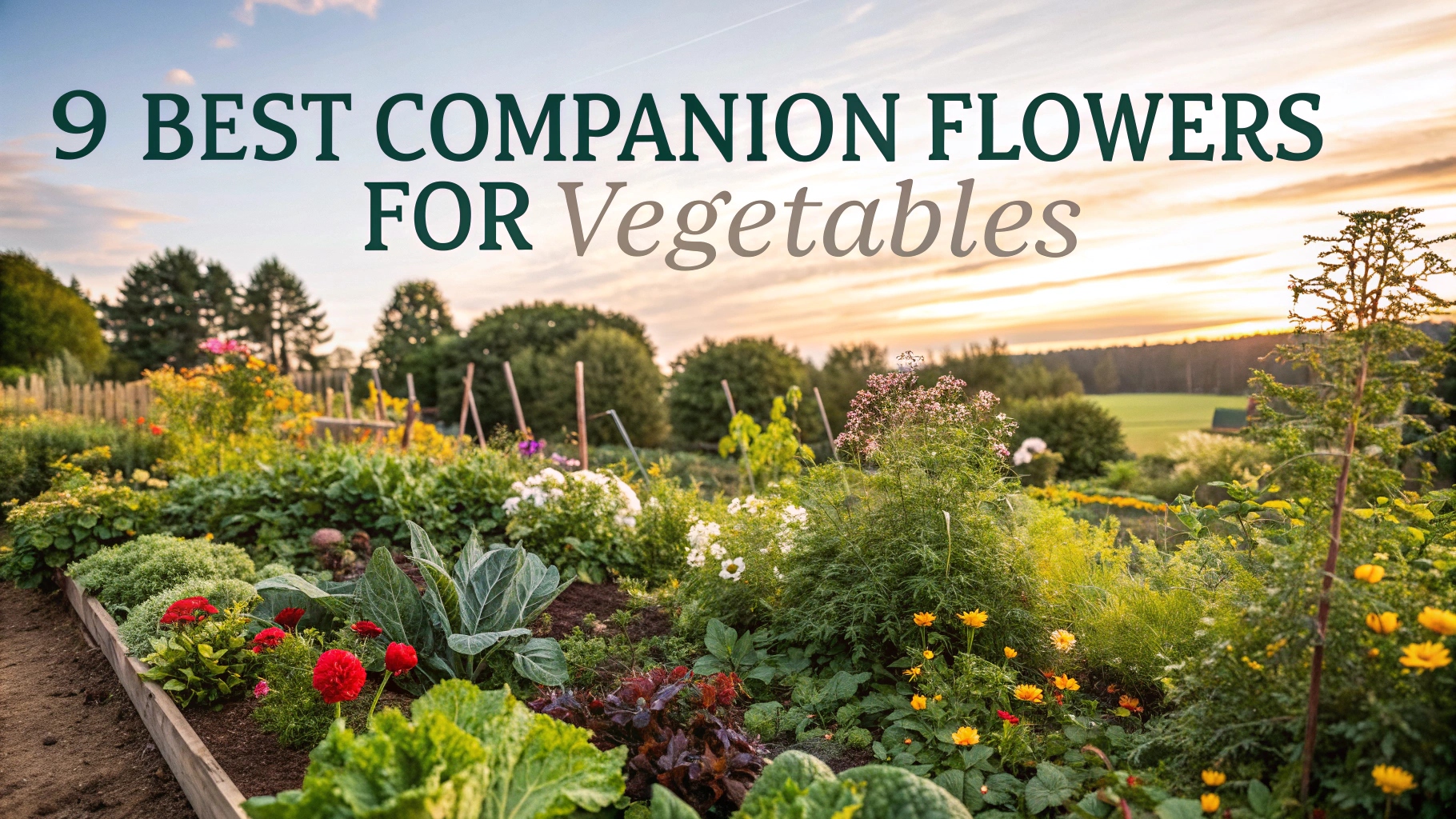
Gardening enthusiasts know that the secret to a thriving vegetable garden isn’t just about the vegetables themselves; it’s about the companions that help them flourish. Companion planting is an age-old technique used to boost growth, repel pests, and enhance the flavor of veggies.
In this article, we’ll explore nine stunning companion flowers that can elevate your vegetable garden, making it not only more productive but also a visual delight.
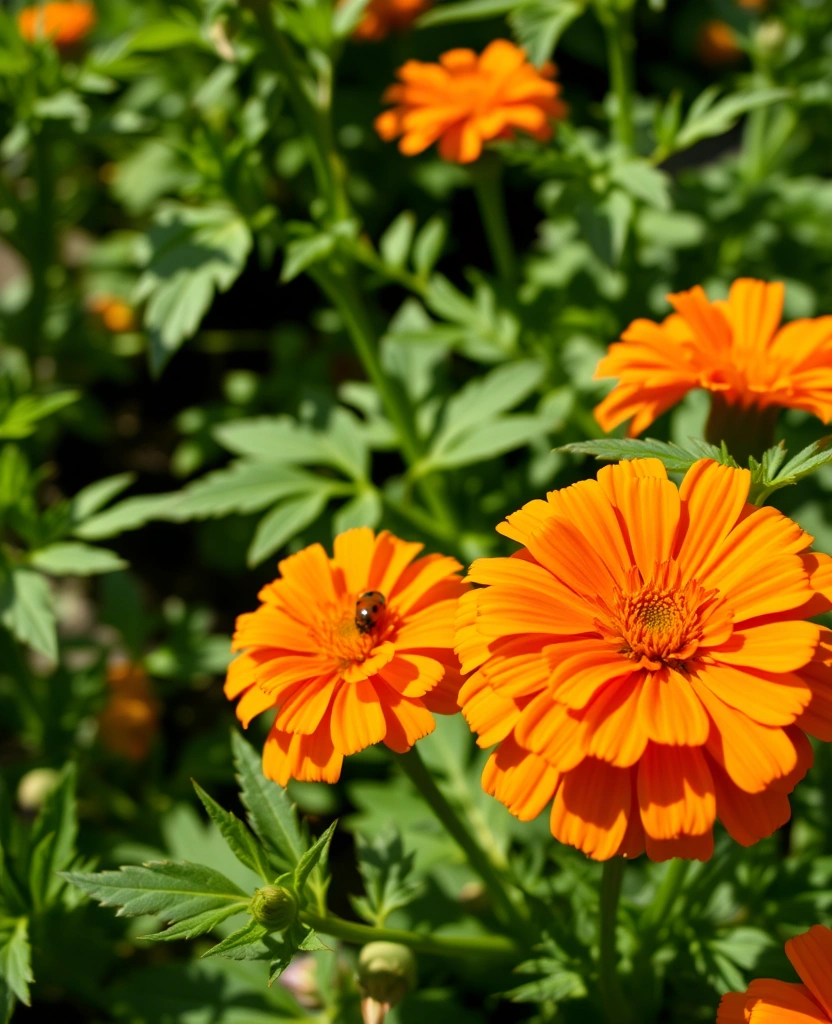
Marigolds are iconic companion flowers known for their vibrant hues of orange and yellow. These cheerful blooms are not just pleasing to the eye but serve as a natural pest deterrent, particularly for nematodes and aphids.
Planting marigolds in your vegetable garden can help protect more vulnerable crops like tomatoes and peppers, allowing them to thrive and produce an abundance of fruit. Their strong scent masks the aroma of your vegetables, confusing pests and keeping them at bay. Plus, marigolds attract beneficial insects like ladybugs, making them a must-have in any garden.
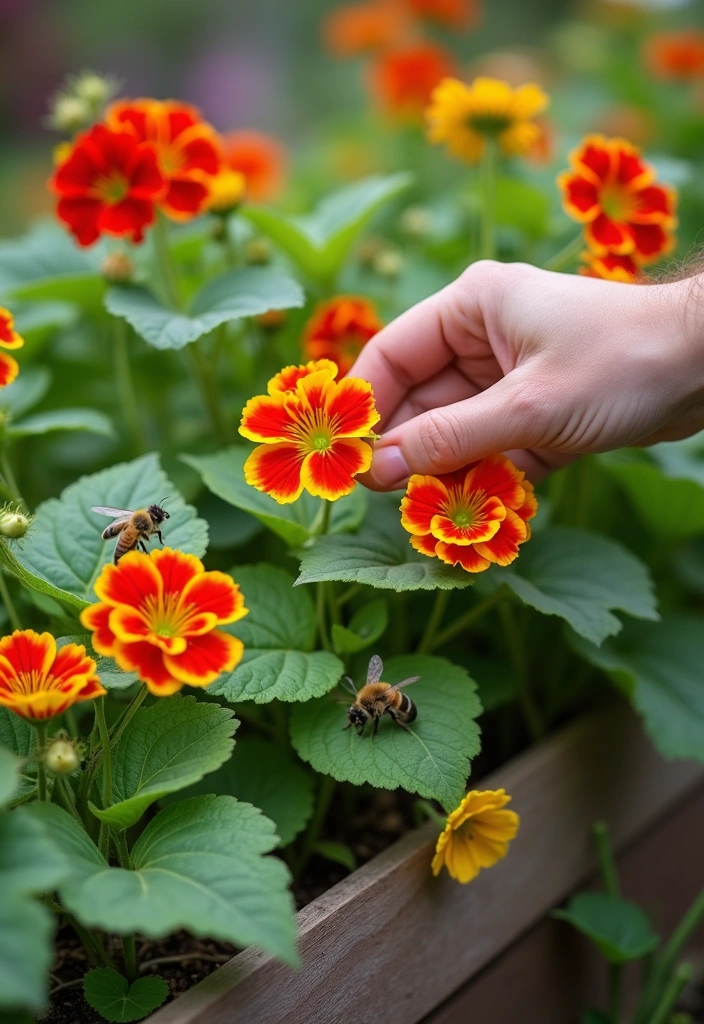
Nasturtiums are not only stunning with their vibrant red, orange, and yellow flowers, but they also bring a delightful peppery flavor to the table. These flowers are edible, making them perfect for salads or as garnishes, adding both beauty and flavor to your dishes.
Nasturtiums thrive in poorer soils, allowing the more nutrient-demanding vegetables to take center stage. Additionally, they attract aphids away from your veggies, acting as a trap crop that protects your plants. Their trailing nature also allows them to cover bare soil, helping to suppress weeds.
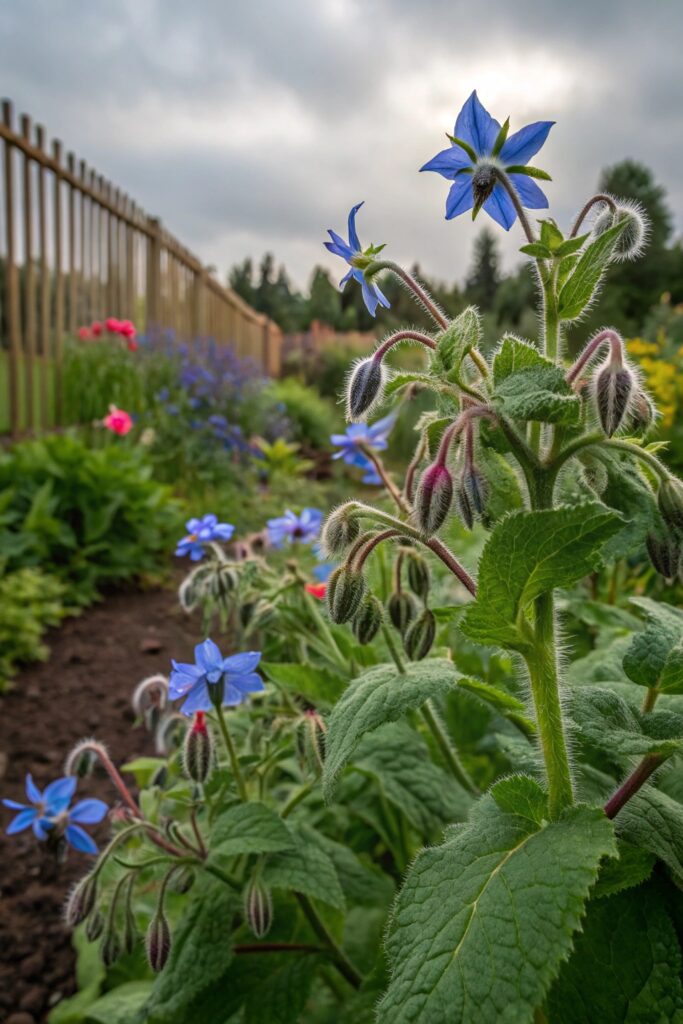
Borage, with its star-shaped blue flowers, is a favorite among gardeners looking to attract pollinators. These lovely blooms are not only aesthetically pleasing but also beneficial for the vegetable garden, as they attract bees and other pollinators that improve fruit set in crops like cucumbers and tomatoes.
Borage is also known to enhance the flavor of strawberries and can improve the overall health of your soil through its deep-rooted structure. As an added benefit, the leaves can be used as a green mulch, suppressing weeds and retaining moisture in your garden beds.
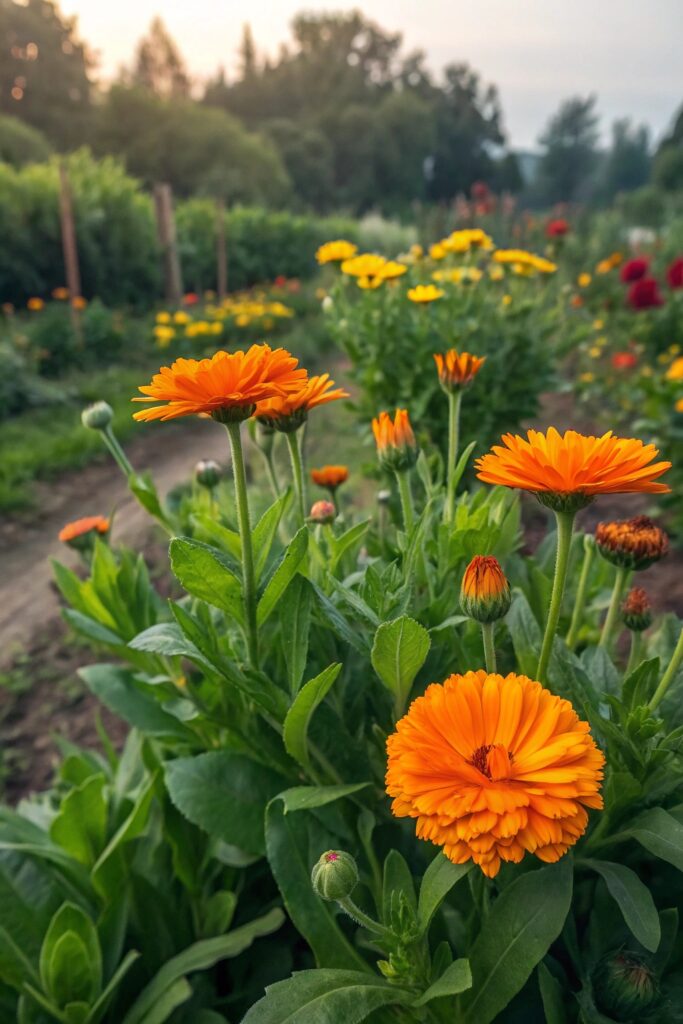
Calendula, also known as pot marigold, delights with its sunny yellow and orange blooms that can brighten any garden space. Apart from its beauty, calendula is known for its medicinal properties and can be used in homemade salves and lotions.
In the vegetable garden, calendula can deter pests like aphids and whiteflies while attracting beneficial insects. Its blooms can also be harvested and used as a natural dye for foods or crafts, making this flower as versatile as it is lovely.
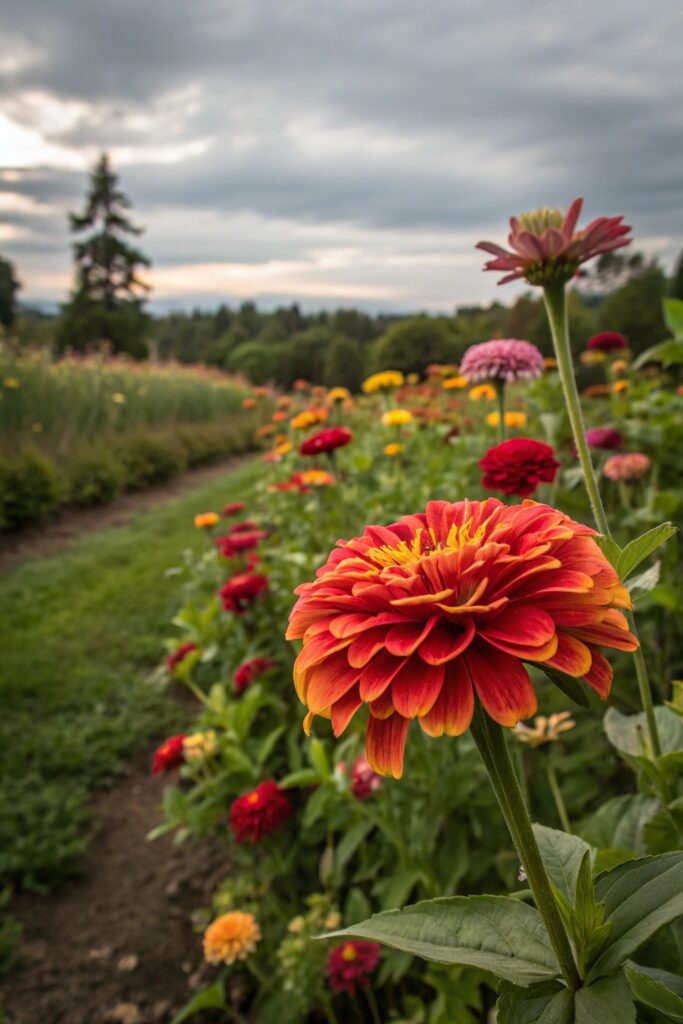
Zinnias are a burst of color, available in nearly every hue imaginable, making them a striking addition to any vegetable garden. Their long-lasting blooms not only add beauty but also attract butterflies and beneficial pollinators to your garden.
Zinnias are excellent companions for tomatoes and peppers, as their vibrant flowers lure pests away from these crops. They thrive in sunny locations and poor soil, allowing your veggies to flourish without competition for nutrients.
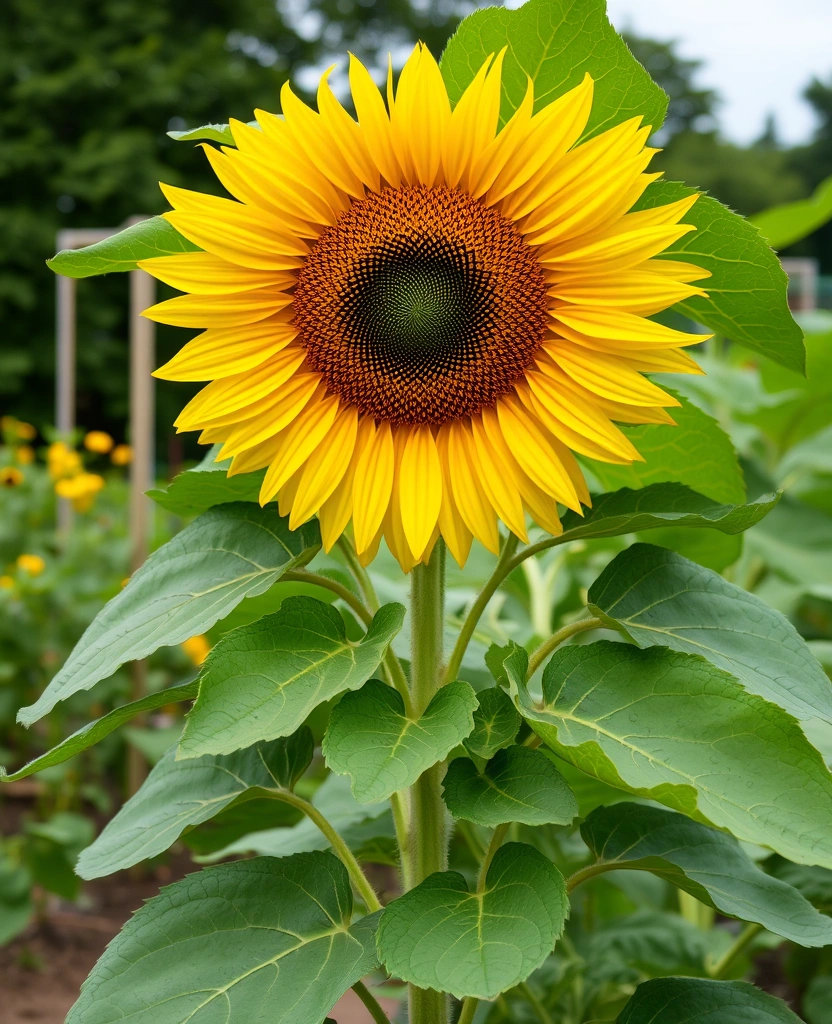
Sunflowers are not only striking due to their towering height and bright yellow petals, but they also serve a purpose in the vegetable garden. These giants provide shade to smaller plants, such as lettuce and spinach, helping to keep them cool during the hot summer months.
Their large blooms attract pollinators and birds while also acting as a natural pest deterrent. Additionally, sunflowers can produce seeds that are excellent for birds, creating a balanced ecosystem in your garden.
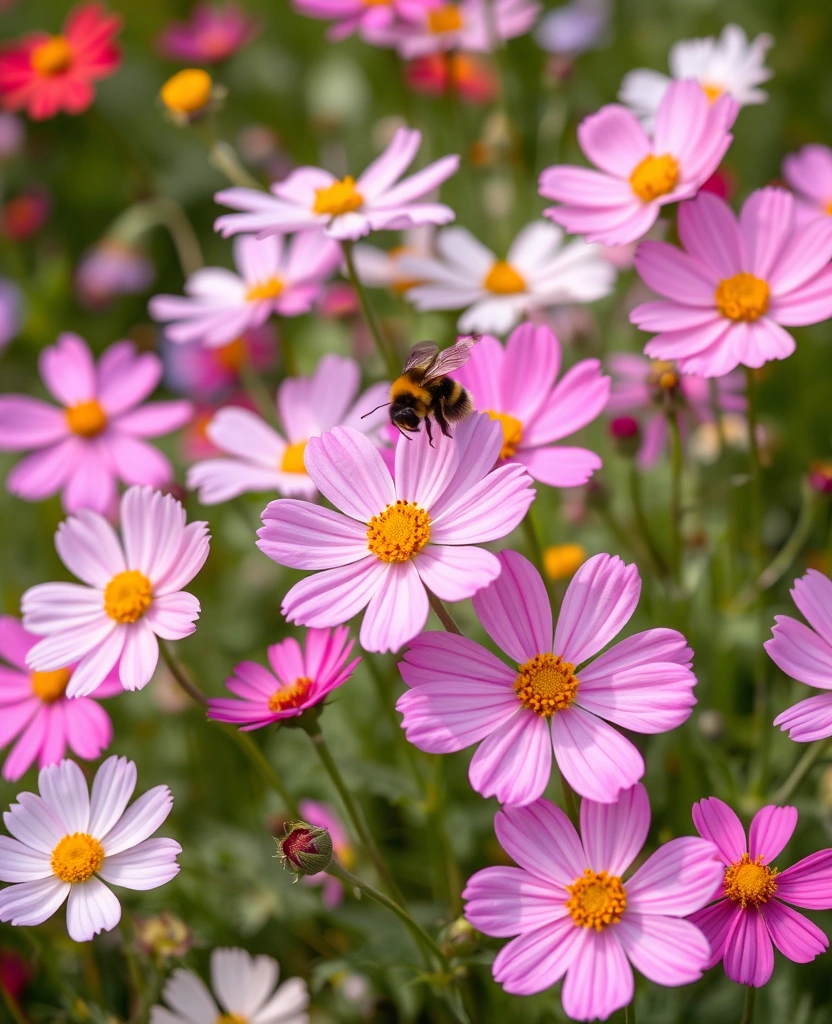
Cosmos flowers are known for their dainty, feathery petals and vibrant colors, bringing a soft touch to your garden. These flowers are particularly good at attracting beneficial insects, such as lacewings and ladybugs, which help control pests that threaten your vegetables.
Cosmos thrive in poor soil and can handle drought conditions, making them low-maintenance companions for crops like corn and beans. Their long-lasting blooms can also be cut for stunning floral arrangements, allowing you to enjoy their beauty indoors.
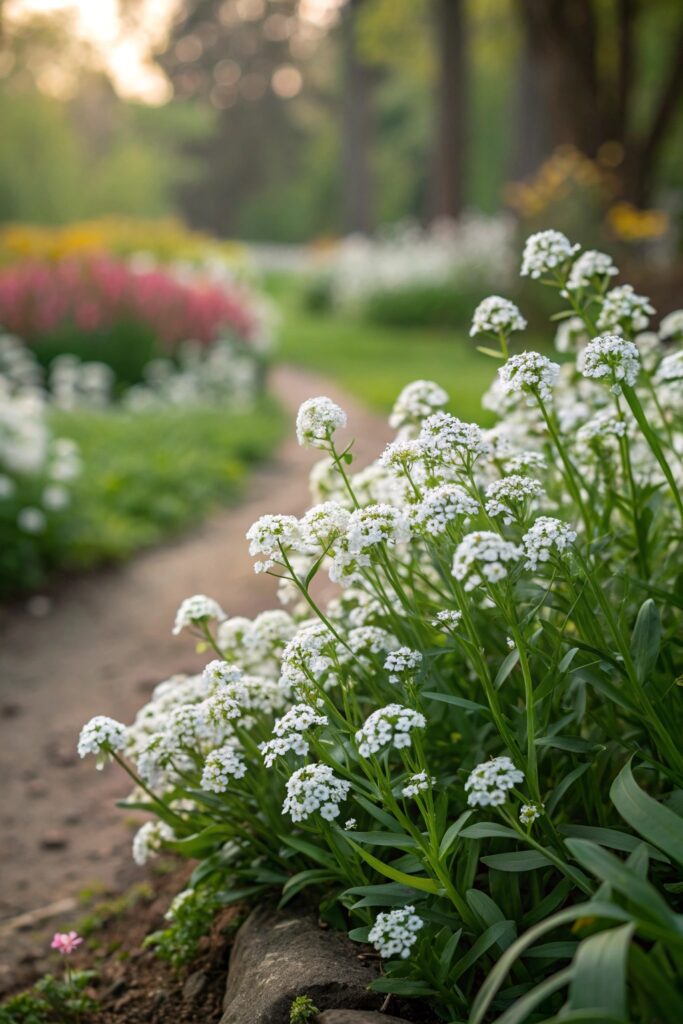
Sweet Alyssum is a delightful companion flower that carpets the ground with its clusters of tiny, fragrant blooms. These flowers release a sweet scent that attracts pollinators, making them a perfect addition to your vegetable garden.
Alyssum can thrive in a variety of soil types and conditions, helping to suppress weeds and retain moisture. The low-growing nature of this flower makes it an excellent choice for edging garden beds, providing both visual appeal and practical benefits.
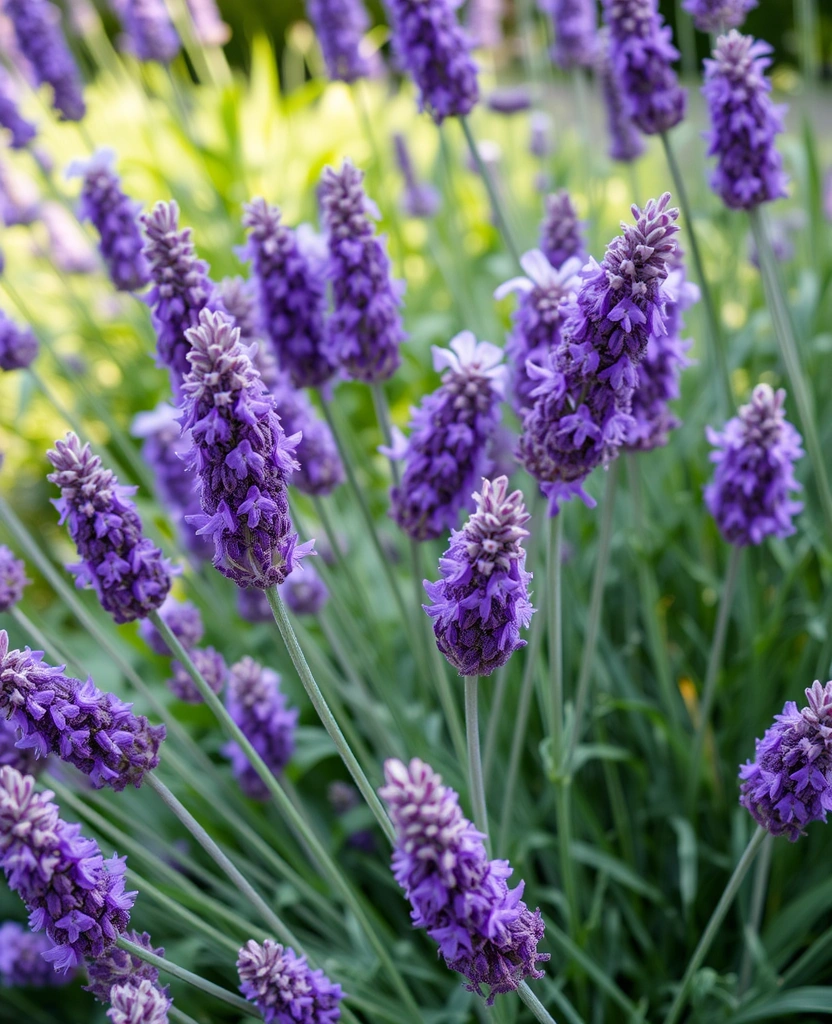
Lavender is not only cherished for its heavenly scent but also for its ability to repel pests like moths and aphids. This perennial herb adds a touch of elegance to your vegetable garden with its striking purple spikes.
Planting lavender near vegetables can enhance their flavor and aroma, particularly for herbs and tomatoes. Additionally, lavender attracts beneficial pollinators, contributing to a healthier ecosystem in your garden.
Incorporating companion flowers into your vegetable garden not only enhances the beauty of your space but also creates a thriving ecosystem. From pest deterrents to pollinator attractions, these nine flowers bring a myriad of benefits to your plants while providing visual delight. Consider adding a few of these companion flowers to your garden this season and watch your vegetable plants flourish like never before!
